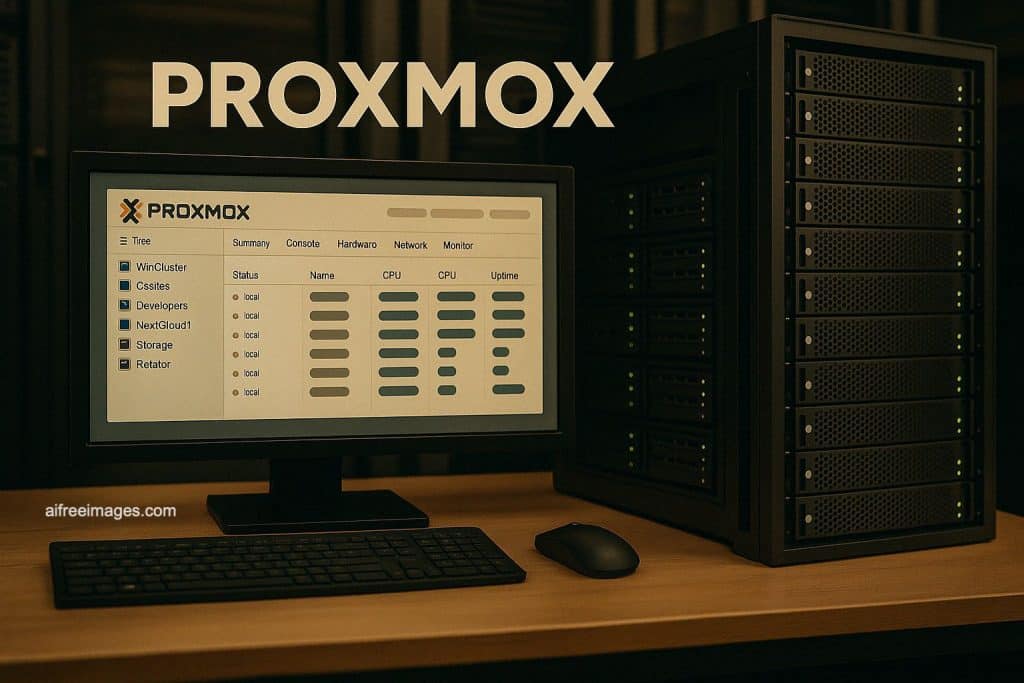Proxmox Server Solutions has taken another decisive step in the backup market with the launch of Proxmox Backup Server (PBS) 4.0, an upgrade that not only enhances the technical capabilities of its predecessor, PBS 3.4, but also strengthens its position as a viable alternative to commercial heavyweights like Veeam Backup & Replication and Nakivo Backup & Replication.
In a market where the demand for reliable, high-performance, and scalable backups is growing alongside virtualization, hybrid cloud, and AI adoption, Proxmox’s commitment to an open-source ecosystem with no per-CPU or per-VM licensing is becoming increasingly attractive for organizations seeking full control, predictable costs, and technology sovereignty.
From PBS 3.4 to PBS 4.0: A Generational Leap
The April 2025 release of PBS 3.4 already brought valuable improvements:
- Optimized garbage collection (GC), with faster runs thanks to advanced caching.
- Granular snapshot selection for remote sync, including the ability to filter encrypted or verified items.
- Static CLI client to back up Linux hosts without Proxmox VE.
- Improved tape backup performance and general operation speed.
However, PBS 4.0 represents a deeper technological shift, introducing features that expand its reach well beyond Proxmox-centric deployments.
Key Technical Enhancements in PBS 4.0
| Feature | PBS 3.4 | PBS 4.0 |
|---|---|---|
| Base OS | Debian 12 “Bookworm” + Kernel 6.8 (optional 6.14) | Debian 13 “Trixie” + Kernel 6.14 |
| ZFS | v2.2.7 | v2.3.3 with dynamic RAIDZ expansion |
| S3 Storage | No native support | Full native S3 support with local caching and resilient recovery |
| Auto Sync | Manual only | Triggered automatically when mounting removable datastores |
| Migration Path | Limited guidance | Official step-by-step upgrade guide from PBS 3 |
The addition of native S3 support opens the door for seamless integration with backends like MinIO, Wasabi, Backblaze B2, or AWS — a capability that was previously limited to paid competitors. Similarly, dynamic RAIDZ expansion allows new disks to be added to a pool without service disruption, a major benefit for fast-growing infrastructures.
How It Stacks Up Against Veeam and Nakivo
Veeam and Nakivo dominate the enterprise backup segment thanks to their maturity, multi-platform support, and deep integrations. However, both rely on licensing models based on CPU sockets, VMs, or workloads, which can drive up costs significantly in large environments.
| Feature | Proxmox Backup Server 4 | Veeam Backup & Replication | Nakivo Backup & Replication |
|---|---|---|---|
| Licensing | Open source, no per-CPU/VM cost | Commercial, per socket/VM | Commercial, per socket/VM |
| Proxmox VE Support | Native, block-level dedup & compression | Compatible (plugin/agent) | Compatible (plugin/agent) |
| S3 Support | Native in v4.0 | Native | Native |
| Granular Restore | Yes – VM, disk, file | Yes – advanced | Yes – advanced |
| Tape Backup | Yes | Yes | Yes |
| Multi-Hypervisor Support | Limited to KVM/QEMU + Linux/Windows agents | VMware, Hyper-V, Nutanix AHV, etc. | VMware, Hyper-V, Nutanix AHV, etc. |
| Total Cost for Large Deployments | Low (hardware + optional support) | High | Medium-High |
| Scalability | High in Proxmox environments | Very high | High |
In environments where Proxmox VE is the primary hypervisor, PBS 4 delivers an integration depth — especially in block-level deduplication and compression — that neither Veeam nor Nakivo can match. On the other hand, for heterogeneous infrastructures running VMware, Hyper-V, or Nutanix AHV, Veeam and Nakivo remain more versatile.
Strategic Advantage: The Proxmox Ecosystem
One of PBS’s most significant differentiators is its tight integration with Proxmox VE and Proxmox Mail Gateway, enabling a unified virtualization, email filtering, and backup stack — all built on the same open-source philosophy.
PBS is also highly scriptable and API-driven, making it a strong fit for DevOps, CI/CD pipelines, and hybrid backup strategies without hidden licensing costs.
The Road Ahead for Proxmox Backup Server
The arrival of PBS 4, and the speed at which Proxmox has been adding features traditionally locked behind commercial products, shows that PBS is on a steep maturity curve.
If the project continues to expand multi-hypervisor support, enhance granular recovery options, and strengthen public cloud integrations, it could emerge as a major player in the backup market — not just in Proxmox-only environments.
For now, PBS 4 already delivers:
- Predictable, low costs.
- High efficiency in VM and container backups.
- Direct S3 integration without middleware.
- Simple scalability for on-premises and private cloud setups.
With support for PBS 3.4 guaranteed until August 2026, organizations have ample time to plan a smooth migration — one that is likely to deliver tangible gains in performance, flexibility, and storage efficiency.
FAQs
1. Is Proxmox Backup Server 4 a true alternative to Veeam or Nakivo?
Yes, in Proxmox VE-based environments, thanks to its native integration, efficiency, and zero licensing costs. In heterogeneous environments, Veeam and Nakivo still offer broader hypervisor support.
2. What’s the real benefit of S3 support in PBS 4?
It enables direct backups to S3-compatible storage such as AWS, Wasabi, or MinIO, with optimized recovery and local caching for faster restores.
3. Is PBS suitable for large datacenters?
Absolutely — particularly those running Proxmox VE. Its block-level deduplication and compression dramatically reduce storage requirements.
4. Should I migrate from PBS 3.4 to 4.0 now?
If you need S3 support, dynamic RAIDZ expansion, or smoother integration with external storage, the upgrade is highly recommended.

